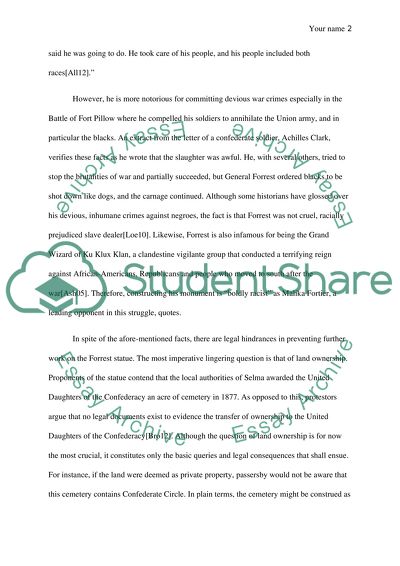Cite this document
(“Nathan Forrests Monument Tribute to Selmas Defender or Wizard of Ku Essay”, n.d.)
Nathan Forrests Monument Tribute to Selmas Defender or Wizard of Ku Essay. Retrieved from https://studentshare.org/english/1458260-nathan-forrests-monument-tribute-to-selmas-defender-or-wizard-of-ku-klux-klan
Nathan Forrests Monument Tribute to Selmas Defender or Wizard of Ku Essay. Retrieved from https://studentshare.org/english/1458260-nathan-forrests-monument-tribute-to-selmas-defender-or-wizard-of-ku-klux-klan
(Nathan Forrests Monument Tribute to Selmas Defender or Wizard of Ku Essay)
Nathan Forrests Monument Tribute to Selmas Defender or Wizard of Ku Essay. https://studentshare.org/english/1458260-nathan-forrests-monument-tribute-to-selmas-defender-or-wizard-of-ku-klux-klan.
Nathan Forrests Monument Tribute to Selmas Defender or Wizard of Ku Essay. https://studentshare.org/english/1458260-nathan-forrests-monument-tribute-to-selmas-defender-or-wizard-of-ku-klux-klan.
“Nathan Forrests Monument Tribute to Selmas Defender or Wizard of Ku Essay”, n.d. https://studentshare.org/english/1458260-nathan-forrests-monument-tribute-to-selmas-defender-or-wizard-of-ku-klux-klan.


